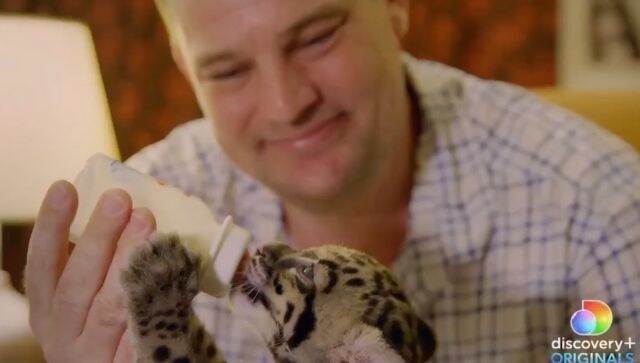
Endangered has a clearly defined set of aims and it achieves most of them without breaking a sweat.

The last couple of years have seen a sharp rise in the number of new nature documentaries, especially in the streaming space. Netflix, Apple, Amazon et cetera have all invested heavily in this space. David Attenborough, the patron saint of nature documentary fans everywhere, has not one but two separate Earth Day releases this year, one apiece on Netflix and Apple+. In January last year, Michael Gunton, creative director of the natural history unit at BBC Studios told the New York Times, “I don’t think I’ve ever seen quite the attention on natural TV programming across such a broad range of audiences and platforms and organisations.” BBC Studios’ latest offering, narrated and executive produced by Ellen DeGeneres, is an 87-minute documentary called Endangered, which premiered on Discovery+ on 22 April.
Endangered is an extended introduction to the work of the IUCN (International Union for Conservation of Nature) Red List, a one-of-a-kind international alliance of over 10,000 scientists, described as “the frontline of conservation work”. These scientists map all known biological species around the globe and more importantly, classify them according to the level of threat they face (Least Concern, Near Threatened, Vulnerable, Endangered, Critically Endangered and so on). As a scientist explains toward the beginning of the film explains, “You can think of biodiversity as a tall, Jenga-like structure and we’re losing little tiles and bricks every time we lose a species. There’s simply no way to tell which brick will be the one whose fall causes the whole structure to collapse.” Thanks to the Red List, conservators know what the planet is doing right, what it’s doing wrong, and which areas need immediate intervention.
The first thing you notice about the film is that like a lot of Discovery content of late, the direction style seems to take its cues from not just action thrillers, but war movies in particular. With Endangered, the 5-minute prologue is a case in point —the camera follows a group of IUCN conservators following a group of giraffes in Congo. They’re about to dart a young female, use ropes to pull her to the ground and then fit her with a tracking device which will help scientists keep an eye on the herd’s movements for several years. Throughout this process, the bodycam footage of the conservators is dished out to music that felt like it could have come straight from Hans Zimmer or Howard Shore’s desk. There are also several war-movie-like shots of the barrel of the gun, the rhythmic pitter-patter of boots in motion. The music is interrupted only by moments of strategic silence, like the half-second where the dart-gunman takes aim and shoots a tranquillizing dart onto the giraffe’s neck. It’s thrilling stuff, but it’s also somewhat derivative.
This is a small complaint to make, however, of a typically professional BBC production. Endangered has been gorgeously shot, its interviews with scientists are sincere and heartfelt, and despite spending just 12-14 minutes with each case study it follows (six in total, from the giraffe to the Grauer’s gorilla to the Clouded Leopard and beyond), manages to communicate the essence of every conservation problem it depicts. It’s tough not to admire the driven individuals who dedicate their entire lives to the safety and well-being of a single species.
Like Bill Wood from Thailand’s Khao Khew Open Zoo, who’s Project Manager of the Thailand Clouded Leopard Consortium. As we see in the film, Wood has an incredibly difficult, frustrating and time-consuming job — to breed these endangered big cats in captivity, which is notoriously difficult to pull off. Even if you gain the trust of the leopards (as Wood and his partner do), the problem is that the males are significantly larger than females and have outlandishly large canines; even a brief physical confrontation can mean death or catastrophic injury for the female. Watching Wood cry at the sight of a newborn clouded leopard — born as a result of his tireless matchmaking efforts — is as satisfactory as watching the feel-good resolution to a Pixar movie.
What, then, of the film’s star narrator, Ellen DeGeneres? For the most part, her narration here is Ellen DeGeneric (#sorrynotsorry). The first crack in the straight-laced façade happens when she’s talking about the aforementioned giraffes wandering off after being fitted with tracking devices. “They’ve gone off to find their moms, or to hang with their girlfriends, or whatever it is that giraffes do,” DeGeneres says in a classic Ellen moment. From that point on, there’s an intermittent supply of one-liners through the film. When a tranquilized lemur falls straight onto the net being held by volunteers in Indonesia, Ellen quips, “Next time, use a larger net you guys, y’know, just to be safe.” She jokes about wanting a gorilla for herself and about the Indonesian cultural obsession with songbirds—it’s fairly low-key stuff but any more would’ve been a distraction from the wildlife on display, one feels.
Endangered has a clearly defined set of aims and it achieves most of them without breaking a sweat. A must-watch if you’re a Discovery fan and a worthy distraction even if you aren’t.
Rating: 4 (out of 5)